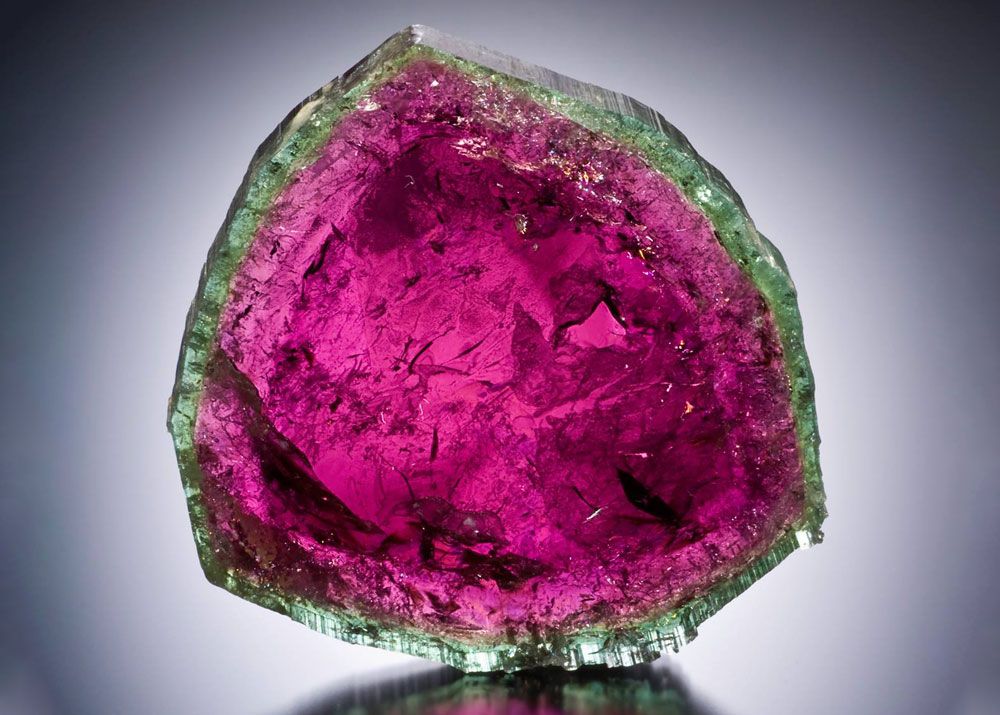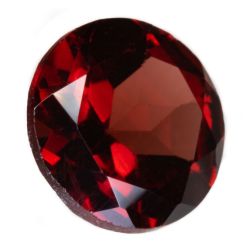American Gem Stories: Maine Tourmaline

When we think of tourmaline, we might think of far-flung places like Brazil or the Himalayas. But some of the world’s most beautiful (and largest) tourmalines can be found deep in the forests of Maine. The US state is probably known more for its rocky coastlines than for the shinier, more valuable rocks under its hills, more for the frights produced by Maine native Stephen King than for the beauty produced by nature.
Despite its proximity to the thirteen original colonies, Maine did not become a state until 1820. Ten other territories would achieve statehood before Maine split from Massachusetts. It still is something of a frontier, wild and sparsely populated once you get beyond the cities and towns of the southern coast.
Imagine what it must have been like in 1820 when a pair of students, 20-year-old Elijah L. Hamlin of Paris, Maine, and his colleague Ezekiel Holmes, set out to explore a stretch of the White Mountains near Paris, a small town nestled in the forested hills about 50 miles northwest of Portland. What was almost an uneventful hike turned into one of the most momentous discoveries in the history of Maine: the discovery of tourmaline on Mt. Mica.
Hamlin is credited with the discovery of Mt. Mica, though the area was well-known to the Abenaki, one of the Wabanaki peoples, Algonquin speakers who called the White Mountains Woban-aden-ok, meaning “to the place of the high white or crystal/mica mountains.”
 Tourmaline specimen from Poland, Maine courtesy Cross Jewelers.
Tourmaline specimen from Poland, Maine courtesy Cross Jewelers.
The Wabanaki peoples had already been living in the area for some ten thousand years before they began trading with Vikings from Greenland and Iceland in the 1200s. But to Hamlin and other European-descended Maine residents, the interior of Maine surely had the same romantic allure as the expanse of the continent lying to the west of the Appalachian Mountains.
More a hill than a mountain, Mt. Mica slopes gently upward, rising about a hundred feet above the surrounding land, though not as high as the hills that rise to the north and south. Hamlin’s son, Augustus Choate Hamlin, describes Mt. Mica in his 1895 book The Discovery of Mount Mica as “a little hill seeming to be one of the buttresses of the rocky range towering above it.”
As the younger Hamlin tells it, his father and Holmes were making their way back to Paris when, as the setting sun began to descend behind the mountains, “a vivid gleam of green flashed from an object on the roots of a tree upturned by the wind.” The sun’s reflection on a gem caught his eye, and just like that, at the end of a long day of hiking, Hamlin discovered tourmaline in Maine by accident.
The rest is history. Discovering one of the pillars of the Maine economy would have been accomplishment enough for most people, but Hamlin was not ready to peak at 20. To sum it up 80s-movie-epilogue-style, Hamlin went on to graduate from Brown University, become a lawyer, and serve in the Maine House of Representatives. You may have heard of his brother, Hannibal Hamlin, a staunch abolitionist who served as Abraham Lincoln’s first vice president.
 Blue-Green Tourmaline from Mayer & Watt
Blue-Green Tourmaline from Mayer & Watt
How Was Maine’s Tourmaline Formed?
That glimmering green gem had been in Maine far longer than Hamlin, and far longer, even, than the Abenaki. The bedrock below northeastern North America is some of the oldest in the world. The east-coast Appalachians might not be as impressive as their towering west-coast counterparts in the Rockies, but that’s because the Appalachians are far older, worn down by hundreds of millions of years of erosion. One of the world’s oldest rivers, the ironically named New River, flows through an Appalachian valley between western North Carolina and Virginia.
The geological activity that formed the Appalachian Mountains that stretch from Georgia to Maine also created the Atlas Mountains of Morocco. This was some 500 million years ago, when what would become North America was still connected to what would become Africa. The northern end of the Appalachians, in what is now Maine and New Brunswick, Canada, were a chain of volcanoes. The slow cooling of magma over millions of years allowed large tourmaline crystals to form in pegmatite.
Maine is home to just about every shade of tourmaline, including one of the rarest shades of all, blue. The alluring, ghostly shade of blue is caused by trace amounts of iron trapped in the tourmaline crystal. A greater amount of iron creates black tourmaline, which is the most common variety found in Maine. Pink, green, and watermelon (a crystal containing both pink and green) are also common in Maine. While the interior of Maine may have seemed like a fresh new world to Hamlin and Holmes, their discovery revealed the land to be far older than they could have ever imagined.
 Pink Tourmaline Box Pendant
Pink Tourmaline Box Pendant
 Sterling Silver Groundbreaking
Sterling Silver Groundbreaking
Earrings - Tourmaline
Thoughts on “American Gem Stories: Maine Tourmaline”
-
What a great story! I found it quite interesting to learn of the history of Tourmaline in the US.









